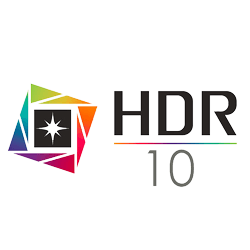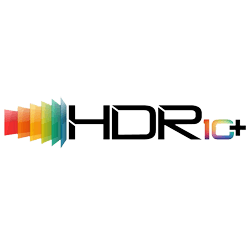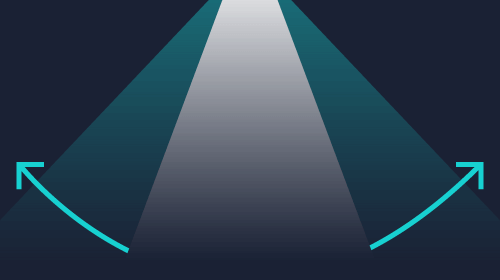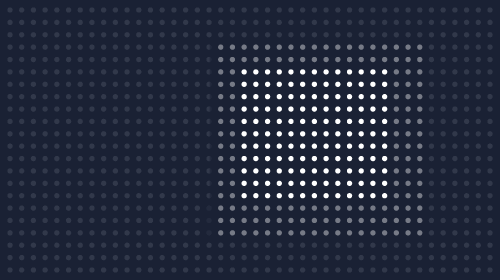QLED vs OLED TV comparison 2022/02


Hey! If you buy through our links, you support our project. It won't cost you a cent more! Many thanks in advance! ♥️
QLED and OLED compared – Which TV is better?
Detailed comparison: QLED or OLED
QLED better for bright rooms
QLEDs can be much brighter and thus better cope with common lighting conditions. In addition, the expensive models usually have an additional layer built into the panel that can handle reflections even better. Thus, you can still enjoy your movies and series very well in light-flooded rooms. OLEDs do not perform as well here because they deliver a better performance in dark rooms.








OLED at an advantage
The viewing angle really depends on the model, but OLEDs are generally ahead here because their viewing angle is always very wide. Due to the VAVertical Alignment, type of LCD Panel panel installed in many QLED models, the viewing angle is quite narrow and the picture is usually washed out from an oblique angle. Some TVs therefore have an additional layer built into the panel, but that usually only applies to the expensive models.






Both technologies are similarly good
When watching series or the everyday TV program, both technologies are almost on the same wavelength. It is true that the OLED performs better due to its theoretically infinite contrast, which is simply due to the organic pixels. A TV with a local dimming function can do well against this, but they are usually not quite as precise.



Great picture on both TVs
The situation is a bit different in the HDRHigh Dynamic Range – image/video with more dynamic range (contrast range) sector, since it depends very much on which HDR formats are supported. While Samsung still does not support Dolby VisionDynamic HDR-format with a color depth of up to 12 Bits and Mastering of up to 10,000 Nits, Sony relies on a proprietary image optimization that cannot be displayed in values. However, it is one of the best on the market. Contrast and black level also make a big difference here, which is why an OLED tends to score a bit better.









Both technologies perfect for home theater
Here, too, it depends on the details, but both technologies are perfectly suited for home cinema. Whether streaming services or the home media library – nothing stands in the way of a good picture quality.


Ideal for gaming
No matter if QLED or OLED, both technologies are perfectly suitable for gaming. Both technologies are suitable for gaming, but you should always keep an eye on certain additional features. For example, you absolutely need an HDMI 2.1 port for the current consoles to be able to use them to their full potential, and a low input lag and a fast response time also ensure a lot of gaming fun.





Great for next season
Both technologies are well suited for watching sports events. TVs with a frequencyHertz is the derived SI-unit of frequency with 1Hz=1/s – When talking about TVs this means how many different pictures a TV can display in one second. of 120 HzHertz is the derived SI-unit of frequency with 1Hz=1/s – When talking about TVs this means how many different pictures a TV can display in one second. and a low response time are ideal so that everything is displayed smoothly. However, if you mainly watch sports during the day, you should rather go for a QLED, unless you can darken the living room.
Very good smart TVs
Basically, both technologies are excellent smart TVs and most current TVs are equipped with everything you need. There are hardly any differences in operating systems in particular, and you should look individually to see which one suits you best. In the end, it still depends on connections or functions that are better represented in one brand than in another.


kompatibel

integriert



integriert

kompatibel
Our conclusion:Should I buy a QLED or an OLED?
Deciding which TV to buy isn’t necessarily easy. While both technologies deliver fantastic results that should please most people, it is advisable to choose one that suits your individual needs and fits well with your lighting conditions. QLEDs are the better all-rounders here, while an OLED TV simply offers unmatched contrast and the perfect black.
Also, feel free to check out our FAQs if you have any unanswered questions.
Frequently asked questions about QLED vs OLED
What are the technical differences?
The technical difference that is most noticeable is the type of panel and its light source. While the backlight of a QLED works via LEDs, it is the pixels themselves that light up in OLED TVs. This also results in the almost infinite contrast that a QLED cannot achieve with LED backlighting.
How does an OLED panel work?
The abbreviation OLED stands for organic light emitting diode and here the word organic is especially interesting. The term comes from organic chemistry, which deals with carbon compounds. Each individual pixel of the OLED panel consists of 4 sub pixels (white, red, green and blue), which can emit light in the corresponding color at different intensities. To display the perfect black, which OLED TVs are known for, the pixels simply turn off completely.
How does a QLED panel work?
The basis of every QLED panel is a normal LCDLCD = Liquid Crystal Display – a type of screen using liquid crystals for creating the image panel. In addition, a quantum dot layer is added, which splits the light of the backlight into the monochromatic wavelengths of red, green or blue. This splitting primarily achieves higher brightness and a better gamut.
The technology can be found under a different name with other manufacturers. Sony calls it Triluminous, LG calls it Nano Cell, Hisense ULED, and only Samsung and TCL explicitly call it QLED technology.
How does a QD OLED work?
QD OLEDs were newly introduced in 2022 and could be a mixture of OLED and QLED technology from the name. Technically, they kind of are. The TVs have a blue, self-luminous OLED layer, on which there are quantum dots in red and green. A white sub pixel layer no longer exists. This allows the QD OLEDs to be much brighter and the color representation is also much broader.
What differences do a VA and IPS panel offer?
QLED TVs can have both an IPSIn-Plane Switching, type of LCD Panel and a VAVertical Alignment, type of LCD Panel panel. Both bring significant differences that should be considered before buying.
A VA panel always offers a narrow viewing angle, but also a better contrast and black value. However, it also depends on the installed backlight and the available local dimming.
An IPS panel always has a very wide viewing angle, but this has a negative effect on the contrast and black value. If a TV has an ADS panel, it is comparable to the values of an IPS panel.
Why do I need local dimming?
While the organic pixels of an OLED TV light up themselves and can thus also be dimmed, a QLED TV needs help from a local dimming function to achieve a high contrast and deep black.
The backlight of a QLED TV is dimmed independently in different zones. Only this achieves a significantly higher contrast. In addition, the corresponding dimming algorithm has to work well so that a satisfactory result can be achieved here.
Sony can score here with its in-house technology XR Backlight Master Drive, whose algorithm optimizes the backlight. The brightness is increased significantly and the blooming effect is reduced.
What about risk of burn-in?
While users of QLED TVs do not have to worry about burned-in content in the panel, the burn-in risk is still an issue with OLED TVs. However, it is only a theoretical concern for most users because manufacturers have meanwhile installed various features to keep the risk as low as possible.
Aren't OLEDs too dark?
Current OLED TVs achieve average values of 300-400 nitsSI unit of luminance: 1 nit = 1 cd/m2 – The best way of measuring and comparing a TVs brightness for SDRStandard Dynamic Range – image/video with a conventional gamma curve (opposite: HDR) – “normal” videos content and 700-900 nits for HDRHigh Dynamic Range – image/video with more dynamic range (contrast range) content. For most users, this is completely sufficient and the trend is increasing here, since better features are built in to preserve the pixels, but increase the brightness. However, QLEDs get even brighter and are therefore also suitable for light-flooded living rooms.
A brighter display is also more suitable when it comes to reflections. Many QLEDs perform better here because the expensive models in particular have an additional layer that can handle light reflections better.
Which technology is best suited for gaming?
Both technologies are perfect for gaming and there are no major differences. Meanwhile, most current TVs are equipped with an HDMI 2.1 port, so the power of the PlayStation 5 and Xbox Series X can also be used. However, you should pay attention to other details like VRRVariable Refresh Rate – synchronizes the display’s refresh rate with the output refresh rate of the graphics card, a low response time and a low input lag.
Which technology is better suited for home theater?
For home cinema, we usually recommend an OLED TV, since the contrast is much higher than with QLED TVs. Thus, HDRHigh Dynamic Range – image/video with more dynamic range (contrast range) content is simply terrific, since a contrast ratio of ∞:1 and a perfect black can be achieved here. Furthermore, you do not have to deal with picture errors like banding, clouding or black crushLoss of details in dark areas (No Shadows/ No stars in the night sky), which have their origin in poor or non-existent local dimming.
The true-to-life representation of colors is particularly noteworthy here, and dark scenes in particular come into their own very well. Meanwhile, OLED TVs are also available in huge 83 or even 97 inches, which means you really have your own movie screen at home.
Are there any differences in the OLED panels?
All of today’s OLED displays for TVs are manufactured by LG Display. However, the South Korean company also resells its displays, which is why Sony, Philips, Panasonic, Hisense and many other manufacturers source their panels from LG.
Manufacturers like Panasonic additionally refine their panels with things like a heat sink so that they stand out from the standard panel. LG’s Evo panel in the G1 is also just a refined panel that will probably be found more often in the future.

